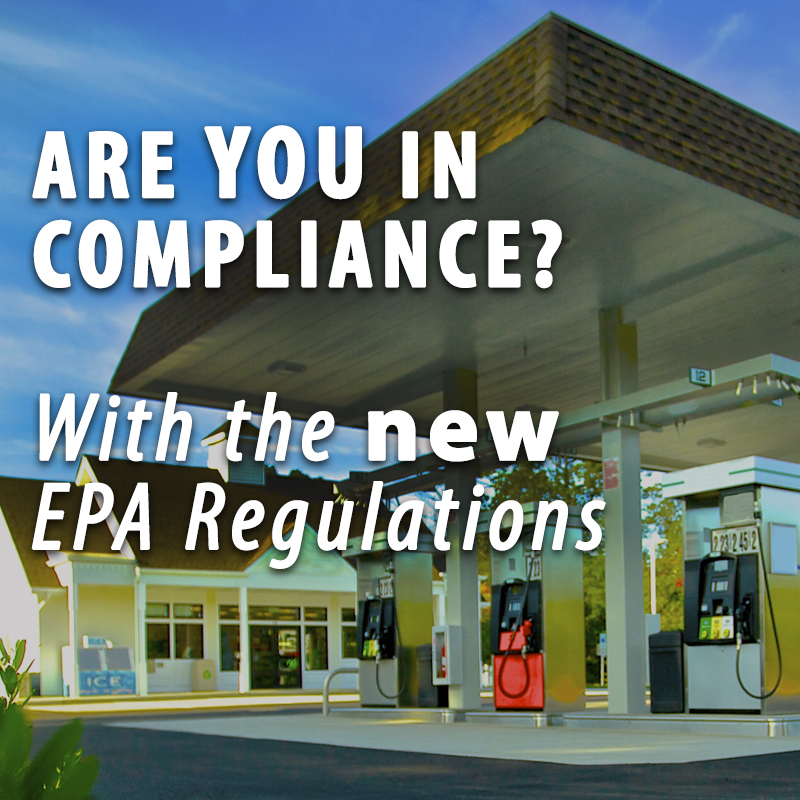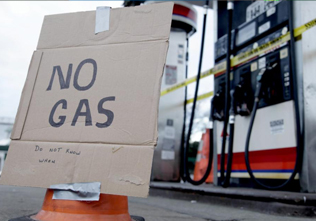“Fueled for Thought,” By Joe O’Brien, Source North America
In 2015, the U.S. Environmental Agency issued new regulations for underground storage tanks (USTs). They will help galvanize a program that promotes strong operational and maintenance practices at fuel sites. But they also put more responsibility on owners and operators – both to know what is expected of them at the federal level, at the state level, or both, and to implement the necessary compliance practices.
With another set of implementation deadlines on the horizon, let’s review the new UST requirements, take a look at how a few states are responding to the regulations and explore what is taking shape for the future of UST compliance management.
RECAP OF FEDERAL UPDATES
The EPA’s 2015 UST revisions, which can be viewed at www.epa.gov/ust, aim to strengthen the 1988 federal underground storage tank regulations through increased emphasis of proper training and maintenance of UST equipment. Revisions include:
- Secondary containment requirements1 were added for new and replaced USTs and piping. Further, under-dispenser containment must be installed for new dispenser systems. This went into effect on April 11, 2016.
- Operator training requirements2 were added for Class A, Class B and Class C operators – Deadline for training is Oct. 13, 2018.
- Periodic inspection and testing3 will be required beginning Oct. 13, 2018. These regulations include walkthrough inspections, inspection of overfill equipment, spill prevention equipment and containment sump testing, and testing electronic and mechanical components of release detection equipment including automatic tank gauges, probes and sensors, automatic line leak detector, vacuum pumps and pressure gauges, and hand-held electronic sampling equipment use for groundwater and vapor monitoring.
- Requirements were clarified to ensure UST system compatibility for storage of biofuel blends.4 (EPA required compatibility beginning with the 1988 UST regulation.)
- Effective Oct. 13, 2018, past deferrals for emergency generator tanks, 5 field constructed tanks and airport hydrant systems6 have been removed.
- UST owners/operators in Indian country must now comply with the regulations.
RULING AUTHORITY: WHOSE RULES DO I NEED TO MEET?
Which state your fuel site is located in determines which set(s) of regulations you need to follow.
In 1988, the EPA published final regulations7 that allow the agency to delegate authority of UST requirements to state agencies. Since then, 38 states plus the District of Columbia and Puerto Rico have instituted “State Program Approval” (SPA). USTs in Indian country are not eligible for SPA. States with approved programs must meet or exceed the federal UST requirements in their regulations. Under the 2015 state program approval regulation that was part of the EPA’s 2015 UST revisions, those 38 states and territories must re-apply by Oct. 13, 2018, to retain their SPA status.8
The benefit of SPA to UST operators is that operators in SPA states do not have to interpret and meet multiple sets of regulations (state and federal), which may conflict with one another. Owners and operators in SPA states must continue to follow their state requirements9until the state changes its requirements or until the state’s SPA status changes. As of Jan. 30, 2018, 15 states and territories had updated their UST regulations 10 to include the 2015 federal UST regulations.
Due to many state-by-state variables, however, a cloud of regulatory ambiguity hangs over the 2015 compliance initiative. For instance, some SPA states have not yet completed updating their regulations to meet the federal requirements. Several have proposed adoption of the regulations or are pursuing rulemaking to propose adoption of the amendments. And a SPA application may technically be approved by a regional administrator, but the process to publish the approval of the program’s Federal Register notice is still under way, and therefore updated documentation of updated regulations isn’t available on the EPA website. Some non-SPA states are incorporating the federal regulations into their rules or are making additional amendments outside of the scope of the federal regulations.
Here’s a status of UST regulations from a sampling of SPA and non-SPA states:
California
This non-SPA state is working to incorporate the federal regulations – and its deadlines – into its regulations. A public comment period11regarding these amendments closed on April 11, 2018. Information about the reconciliation of the federal regulations12 as well as access to the current California regulations13 is available from the State Water Resources Control Board’s Division of Water Quality – Underground Storage Tank Program.14
Florida
This non-SPA state updated its rules to incorporate the federal UST requirements. The current regulations, Chapter 62-761 – Underground Storage Tank Systems,15 are effective Jan. 11, 2017, and available from the Florida Department of Environmental Protection’s Division of Waste Management.16
Illinois
This non-SPA state is currently updating its underground storage tank rules to streamline and update its processes and requirements in conjunction with the October 13, 2018, federal requirements. A comment period for the revisions concluded April 9, 2018. Notices of the proposed rules17 are available from the Office of the Illinois State Fire Marshal.18
New York
This non-SPA state is revising its Petroleum Bulk Storage regulations in two phases. The first phase, effective Oct. 11, 2015, reflects previous changes in state laws and federal laws. The second phase, which is under way, will begin to incorporate more of the EPA’s 40 CFR Part 280 revisions that were introduced in 2015. The current regulations, 6NYCRR Part 613 – Petroleum Bulk Storage,19 and additional bulk storage information is available from the Department of Environmental Conservation Petroleum Bulk Storage program.20
Texas
This SPA state has proposed implementing the federal storage tank rules. A comment period closed on Jan. 9, 2018. The rulemaking would allow the TCEQ to reapply for state program approval from the EPA. Learn more about the status of proposed and pending rules21 from the Texas Commission on Environmental Quality.22
Washington
This SPA state has proposed implementing the federal storage tank rules.23 Public hearings were held Feb. 28 and March 2, 2018. An overview of the changes to the current rule24 is available from the Department of Ecology’s Underground Storage Tank program.25
UST Management: Beyond 2018
If the genuine intentions of the new federal regulations are to emphasize proper training and maintenance of UST equipment, then their adoption may be coming along at a fortuitous time: the upcoming round of federal UST deadlines have coincided with requests to trim the EPA budget, including the Leaking Underground Storage Tank (LUST) program. At least for this current fiscal period, Congress has maintained status quo with regard to both the EPA and LUST budgeting.
Despite legislators’ approval to keep EPA and LUST funding flat for fiscal year 2019, the priorities at the EPA suggest that budget cuts for LUST are likely as we face these spending-deadline bills with increased regularity. Budget cuts could mean that states with UST program authority would not receive LUST prevention funding. If this happens, everybody from legislators and regulatory authorities to technicians and UST owners/operators would need to act cooperatively to maintain a successful decline in compliance incidents moving forward.
LINK CITATIONS:
1: https://www.epa.gov/ust/secondary-containment-and-under-dispenser-containment-2015-requirements
2: https://www.epa.gov/ust/operator-training-minimum-training-requirements-and-training-options
3: https://www.epa.gov/ust/operating-and-maintaining-ust-systems-2015-requirements
4: https://www.epa.gov/ust/emerging-fuels-and-underground-storage-tanks-usts
5: https://www.epa.gov/ust/emergency-power-generator-ust-systems-2015-requirement-release-detection
6: https://www.epa.gov/ust/field-constructed-tanks-and-airport-hydrant-systems-2015-requirements
7: https://www.epa.gov/sites/production/files/2014-09/documents/40cfr281preamble.pdf
8: https://www.epa.gov/ust/state-underground-storage-tank-ust-programs#apply
10: https://www.epa.gov/ust/state-underground-storage-tank-ust-programs#2015update
11: https://www.waterboards.ca.gov/water_issues/programs/ust/adm_notices/fed_rec_regs/
12: https://www.waterboards.ca.gov/ust/adm_notices/fed_rec_regs/
13: https://www.waterboards.ca.gov/ust/regulatory/#rulemaking
14: https://www.waterboards.ca.gov/water_issues/programs/ust/
15: https://www.flrules.org/gateway/ChapterHome.asp?Chapter=62-761
16: https://floridadep.gov/waste
17: https://www2.illinois.gov/sites/sfm/Resources/Pages/Proposed-Rule-Changes.aspx
18: https://www2.illinois.gov/sites/sfm/Pages/default.aspx
19: https://www.dec.ny.gov/regulations/98151.html
20: https://www.dec.ny.gov/chemical/287.html
21: https://www.tceq.texas.gov/rules/propose_adopt.html
22: https://www.tceq.texas.gov/permitting/pst_cert.html
24: https://ecology.wa.gov/DOE/files/02/0202302e-0af5-4e04-bced-15be0a2d0da9.pdf
25: https://ecology.wa.gov/Spills-Cleanup/Contamination-cleanup/Underground-storage-tanks
SOURCE FuelmarketNews.com








